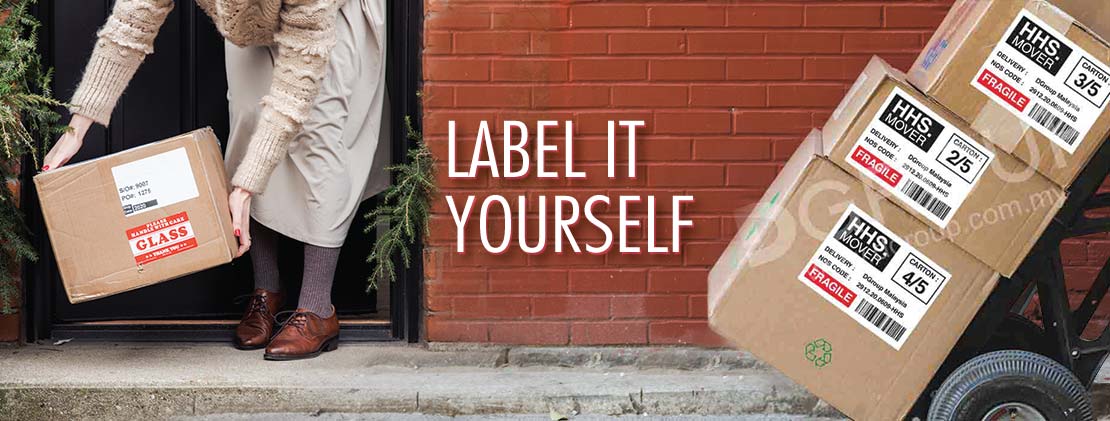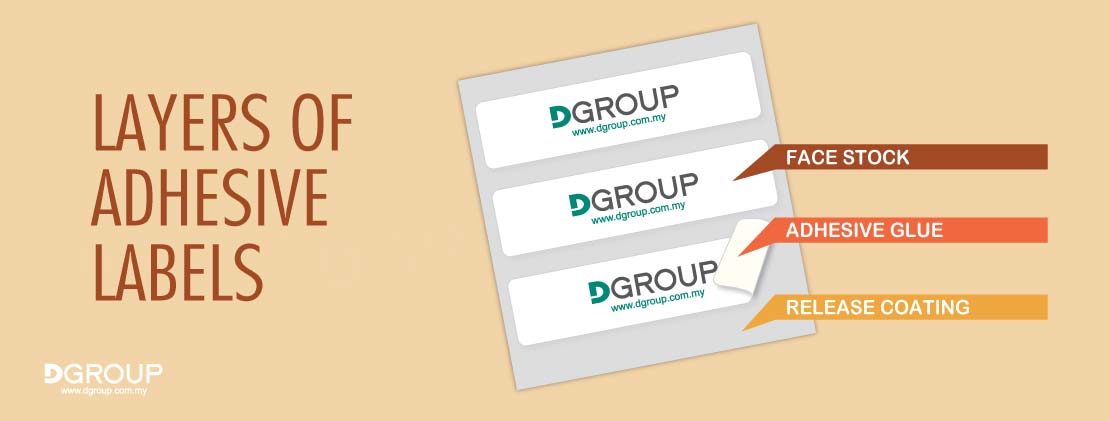
LABEL IT YOURSELF
Article by Nicholas. Updated August 09, 2021
You received a parcel at the doorstep after days of waiting.
You decided to order pizza for takeaway after work because you don't have time to cook a meal yourself.
You purchase paracetamol from a nearby pharmacy when you are unwell.
You go shopping and the items on display tend to catch your attention.
As random & unrelated as these examples may seem, they share one thing in common. All of the products mentioned have labels on them. We see them so frequently that they have become a part of our daily lives. Why is that so?
In today's article, we will talk about the label's importance and how crucial it is for parties involved in the product chain. Next, we will also touch on the label's layers and further branch them out to their types respectively. Their functionality, traits & features, advantages & shortcomings, and their suitability in certain applications will be discussed as well.
Without further ado, let's get right into it!
IMPORTANCE
1. INFORMATION
Labels aren't just plain stickers. They provide important details of the products. Be it prices, ingredients, calories amount, expiry date, delivery address, and etc, users rely on them to make better decisions - to compare prices, for health measures, to innovate & develop, and many more.
2. BRANDING
Aside from information, labels are the most versatile media that businesses utilize for branding. With their signature logos or trademarks printed on the products, their brands can be reached out to more audiences while keeping them easily recognized. This steadily generates familiarity to which leads to sales revenue.
3. STAND OUT
Labels are also great tools to kickstart new businesses. If your new product's packaging is dull, people tend to overlook it. Even if you promote it, it can be a huge struggle, especially to prospects who have been purchasing certain brands from the get-go. Chances are, they probably wouldn't even consider buying your product after you have done pitching. However, with attractive logos, they will definitely catch prospects' attention, trigger their curiosity towards your product and are more likely to give it a try.
LAYERS
Simplicity is not necessarily derived from simple steps. A label fits exactly that because manufacturing it involves meticulous processes. It is made up of three different layers such as face stock, adhesive, & release coating. These different layers are applied to each other to produce the finished product as shown in the diagram below.

1. FACE STOCK (MATERIAL)
Face stock is the top layer in which information or logo is printed onto. It represents the label's material that can either be paper or film type.
(a) PAPER
The main component for a paper face stock is wood fiber. As wood is an inexpensive material, it makes paper the most affordable choice. However, paper is easily damaged by moisture, heat, chemicals and can be torn. Despite its shortcomings, paper has continued to be the most commonly used face stock due to its unique aesthetic qualities. It has a wide range of selections in terms of color, weight, and thickness.
| Type | Characteristics |
|---|---|
| Printing Paper |
|
| Art Paper |
|
| Mirrorkote Paper |
|
| Thermal Paper |
|
(b) FILM
Film-based face stocks are made up of plastic polymers. Labels with such face stocks allow them to match and fit products' unusual shapes. They are also known for having great durability. Aside from their wear & tear resistance, filmic labels are able to withstand adverse environmental conditions such as moisture, heat, chemicals, oil and even alcohol. However, these face stocks are very costly. The four types of film-based face stocks include polyester (PE), polypropylene (PP), polyimide (PI) and polyvinyl chloride/vinyl (PVC).
| Type | Polyester (PE) | Polypropylene (PP) | Polyimide (PI) | Polyvinyl Chloride / Vinyl (PVC) |
|---|---|---|---|---|
| Characteristics |
|
|
|
|
| Printing Technologies | TT, LS, FX, IJ | TT, LS, FX, IJ | TT, FX, IJ | TT, LS, FX, IJ |
| Chemical, Temperature & UV Resistance | Medium to high | Low to medium | High | High |
| Conformability | Medium | Low to medium | Low to medium | High |
| Cost | Medium | Medium | High | Medium to high |
(*TT - Thermal Transfer , DT - Direct Thermal , LS - Laser , FX - Flexographic , IJ - Inkjet )
2. ADHESIVE (GLUE)
Adhesive is the middle layer that sticks your label to your product. The four types of adhesives are permanent, removable, hot-melt and all-temp.
(a) Permanent adhesive is the most cost-effective, common, and suitable for general purposes where a long-term application is needed. Exactly as the name says, it is made to be non-removable. Removing the label not only damage itself, but also damages the products' surfaces and leave glue residues too. Fortunately, there are some methods to remove the glue residue effectively.
(b) Removable adhesive holds fast and does not come off easily. Labels with such adhesive can be removed and reapplied to another surface without losing its stickiness. These labels are normally used on books and glass where glue residue is not tolerable after the label is removed. The effectiveness of removable adhesives depends on the temperature and the surface the label is applied to. Hence, it is best for users to test these removable adhesives out first for suitability.
(c) Hot-melt adhesive is a rubber based adhesive that has a high initial tack. When a hot-melt label is in contact with a surface and pressure is applied, the adhesive will grip the surface it is applied to. The adhesive is comparably softer that allows it to bleed into rough surfaces such as recycled & corrugated cardboards.
(d) All-temp adhesive is ideal for environments with extreme temperatures. Chiller and freezer label adhesives fall into this category. Although it provides tack too at room temperature, this adhesive is commonly used for food application in cold storages. A chiller adhesive works if applied between room temperature to 0℃. A freezer adhesive is recommended for below 0℃.
3. RELEASE COATING
Release coating, also known as liner, backing or carrier, is the bottom layer of the label. It serves two important roles. Release coating protects the adhesive and is thrown away when you are ready to stick the label on a product. It also enables the label to have a smooth feed through the printer. Without a quality line, your printing may face jamming or curling. The three types of release coating are glassine, kraft & filmic.
| Type | Traits |
|---|---|
| Glassine Backing |
|
| Kraft Backing |
|
| Filmic Backing |
|
